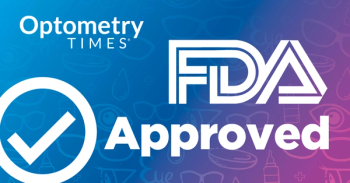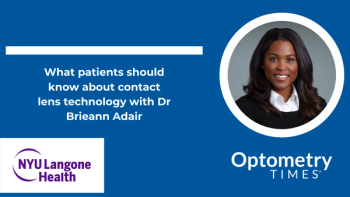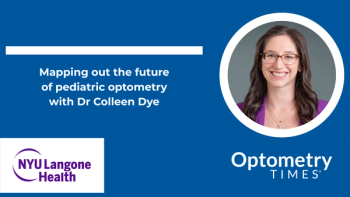
AAOpt 2025: New data demonstrate patient preference of Acuvue Oasys Max 1-Day for Astigmatism for vision, comfort
Giovanna Olivares, OD, presented 2 posters on new data concerning the Acuvue Oasys Max 1-Day for Astigmatism contact lenses at the conference.
Giovanna Olivares, OD, detailed her
Transcript
This transcript has been edited lightly for clarity and length.
Giovanna Olivares, OD:
I'm Dr. Giovanna Olivares, Global Director, R&D for mature eye and astigmatism, for Johnson & Johnson Vision. We're now the first and only family of daily disposable contact lenses that offers the MAX family, to young people, young people with astigmatism, older persons, and older persons with astigmatism. So nearly anybody that walks in the office can have the MAX technology.
I think it's the combination of the three technologies that we have in the OASYS MAX for astigmatism. The OptiBlue technology, that filters the blue violet [light] that may be coming off the screen. We have a TearStable technology that provides better tear stability. When you're on a computer screen, your tears will break up more, because we don't blink as much. So therefore, when we're in the computer screens, we we don't see as well, and we're not comfortable. The TearStable technology has proven to have two times less evaporation, as compared to other brands, and it also has shown to have a longer tear breakup time. Combination of that, and the Blink Stabilized design, is what really creates the experience for the patient.
Over the next decades, I think, you know, obviously, this contact lens offers a light-filtering technology as well as a tear stabilizing technology. I think as we're going into the future, we're going to see that our patients are going to be using their eyes even in more advanced or more challenging environments. Things like the tear stable and the OptiBlue are going to help them now, but we're seeing that in the future, that's the way that we're going to have to deliver better products for our patients.
Newsletter
Want more insights like this? Subscribe to Optometry Times and get clinical pearls and practice tips delivered straight to your inbox.



















































.png)


